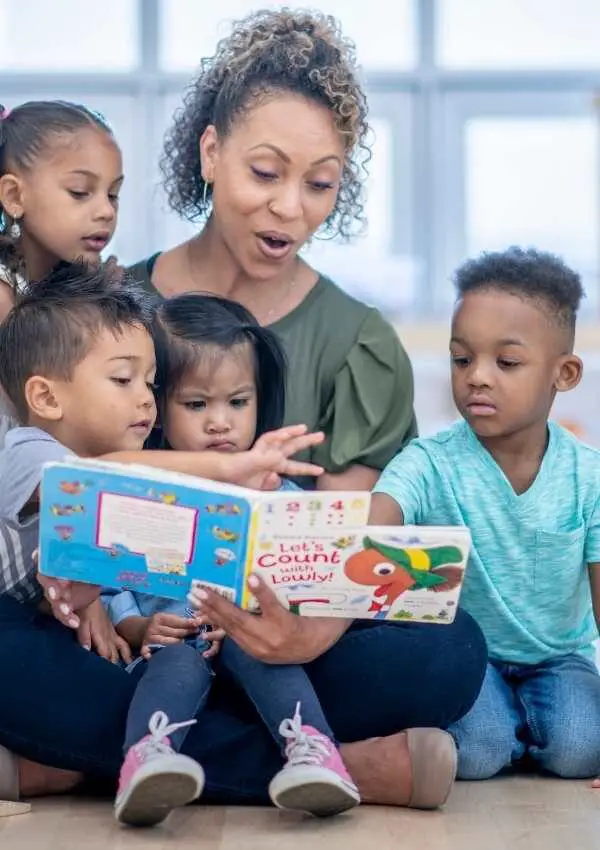We may earn money or products from the companies mentioned in this post.
As adults, we know the value of a dollar, the importance of saving, and the danger of debt. But as kids get older, it can be harder to help them understand financial concepts.
Not only that but many parents struggle to know how to teach their child about money.
It’s not enough to just set a $20 bill on the kid’s desk once in a blue moon and hope they think about it for a few seconds. To help your child understand the value of money and how best to invest in the future so they won’t have student loans until their mid-30s, you need great kid-friendly books about money.
Money is one of those topics that is often taboo but needs to be talked about more often. Even kids need to know how to set up a budget! I use a budget journal like this.
Here are some ideas for books that will help your child understand how money works and grow into an adult who is financially savvy instead of broke all their life.

What is Financial Literacy?
Financial literacy is the knowledge and skills to effectively manage your money throughout your lifetime. It is important for everyone, but especially for young people who will be making financial decisions for the rest of their lives. Financial literacy isn’t just about having the knowledge to make sound financial decisions – it’s also about having the confidence to put your knowledge into practice. There are two important things to understand when it comes to financial literacy.
First, it can’t be taught through one lesson. It is something that must be repeated and learned over time. Second, financial literacy is not just about money. It is about understanding all aspects of your finances, including your health, housing, and retirement plans. Financial literacy also helps you better understand your overall net worth, debt and credit score.
You’re less likely to make unwise financial decisions if you have a strong understanding of how your money works. You’ll be less likely to fall for scams and fraudulent schemes that try to take advantage of uninformed people. You’ll also be more likely to find good financial opportunities because you know what to look for.
The Benefits of Teaching Financial Literacy
One of the most important benefits of teaching children about money is that it prevents them from getting into debt. There are many types of debt including student loans, credit card debt, car payments, and mortgage payments that can plague adults for decades.
Kids who understand how to save money and make financial decisions are less likely to end up in debt and have that burden on their shoulders. Another benefit is that it makes children more financially independent. When your child is financially literate, they know how to make their own money decisions.
They know how to find the best deals, how to use their credit wisely, and how to make the most of their money. This makes them more self-sufficient and helps them feel more responsible and independent.
5 Best Books to Teach Kids About Money
Kids can learn about money at a young age, and this knowledge will stay with them for the rest of their lives. Reading books about money and financial literacy can help your child understand the value of money and how to make it grow. It’s never too early for children to learn about the value of money.
These are some of the best books to teach kids about money. They are written in a way that is easy for kids to understand and offer valuable financial lessons. They can be read aloud to younger kids or read independently by older children. They are great ways to help your child learn the importance of saving money and using credit wisely.
- The Richest Man in Babylon by George S. Clason – Written in the 1920s, this book teaches valuable personal finance lessons that can be applied today. It tells the story of two men: one who wisely manages his money and one who is constantly struggling financially. The Richest Man in Babylon teaches readers how to build wealth by saving money and investing it wisely.
- The Little Book of Money by Jane Wurwand – The Little Book of Money is a beautifully illustrated book about money that kids will love. It uses colorful images and simple text to explain concepts that are easy for children to understand. The book covers topics like managing money, finding ways to earn money, and spending wisely. It’s a great read for younger children who are just learning about money.
- There Was an Old Lady Who Swallowed a Fly by readingroompublishing – This silly book about money is another great option for younger children. It uses a classic rhyme that your child may already know and love to explain the concept of saving money. It is a great way to introduce your child to the basics of saving and how it can help them in the future.
- The Berenstain Bears and the Money Tree by Stan and Jan Berenstain – The Berenstain Bears and the Money Tree is another classic book that was first published in 1981. It teaches kids about the importance of saving money, earning money, and spending money wisely. The book follows the bears as they set up a lemonade stand and learn to make the most of their money. While the book was originally written in the 1980s, it has been updated to be more relevant in today’s world.
- Be Smart with Your Money by Roberta Golinkoff, Ed.D., and Kathy Cox – This book from the Jump$tart Coalition for Financial Education is written for children ages 8-12. It is a thorough introduction to money that talks about earning and spending money, managing debt, and planning for the future. The book is illustrated with silly comics to keep kids interested and make the lessons fun.
How to Use These Books to Help Children Understand Financial Literacy
Once you’ve found a book that seems like a good fit, there are a few ways you can use it to help your child learn financial literacy: Read the book aloud – Read the book aloud to your child. This is a great way to introduce the concepts and help your child understand the story. It can be easier to follow when it is read out loud.
Ask your child questions
– After you finish reading the book, ask your child a few questions about the story. This is a great way for your child to process what they’ve learned. You can ask questions like “What was your favorite part of the story?” or “What did you learn from this book?” Let your child choose the next book
– When it’s time to pick a new book to read, let your child pick which one they would like to read next. Even if it isn’t a book about money, this will help your child feel like they are in control of the situation. It can also spark your child’s curiosity about money and help them ask questions they might not have otherwise.
Bottom line
Reading books with your child about money is a great way to help them learn the importance of saving money and using credit wisely. These books are written in a way that is easy for kids to understand and offer valuable financial lessons. They can be read aloud to younger kids or read independently by older children. They are great ways to help your child learn the best way to manage their money and keep track of their finances.




Leave a Reply